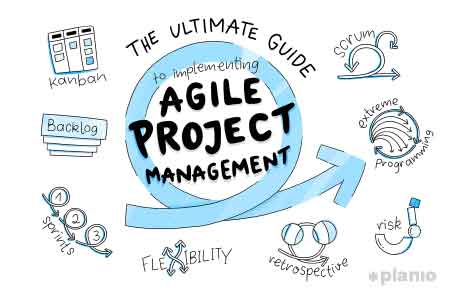THANK YOU FOR SUBSCRIBING
Five Characteristics of Agile Software Development
The most active organizations in adopting agile software development recognize that agile is not something that companies do; instead, it is something that companies become. It takes a long time to become agile, but the benefits have been show

By
Apac CIOOutlook | Tuesday, August 24, 2021
Stay ahead of the industry with exclusive feature stories on the top companies, expert insights and the latest news delivered straight to your inbox. Subscribe today.
The most active organizations in adopting agile software development recognize that agile is not something that companies do; instead, it is something that companies become. It takes a long time to become agile, but the benefits have been shown.
Fremont, CA: There has been a lot written about agile, mobile app development, including its tools and methodologies, the advantages of cross-functional teams and short iterations, and the culture required for success. However, it's essential to consider the basic characteristics of agile architecture and how they relate to real-world software development projects.
Here are five characteristics of agile software development:
Value is a Priority
Agile software development focuses on consistently delivering market value early and often, as shown by verified, approved, and functional software. As a result, product features are the primary planning, monitoring, and distribution unit. The product team counts the amount of working and validated features in each update from sprint to sprint. Although other documents and objects can be required at times, working features are paramount. Each feature must be small enough to be released in a single sprint in this approach to software development. Prioritization of features is critical for achieving sprint targets and generating business value.
Features Begin at High-Level
Rather than devoting a significant amount of time to defining feature specifications before implementation, agile software development projects prioritize and estimate features as needed, then fine-tune the specifics as needed. In most cases, a design thinking process is used during the discovery phase of a project to rapidly create a project roadmap, recorded product specifications, a product mission statement, user personas, and a list of marketable features. With feedback from consumers, testers, and developers working together, the sprint's features become more comprehensive. Unless a sprint is prioritized, no function is explained in detail.
Continuous Testing
Nothing is more dangerous than deferring all research until the end of a project. Product teams can deterministically assess success and avoid defects with continuous testing. This method of testing dramatically decreases the probability of project failure later on. Many waterfall projects fail when it is discovered, late in the project's test-and-fix process, that the design is fatally flawed, that some device components can't be implemented, or that features are unusable and completely useless. Product teams can avoid both the possibility of these issues occurring and the persistent fear of the worst-case scenario by practicing continuous testing.
See Also : - Top Agile Companies





